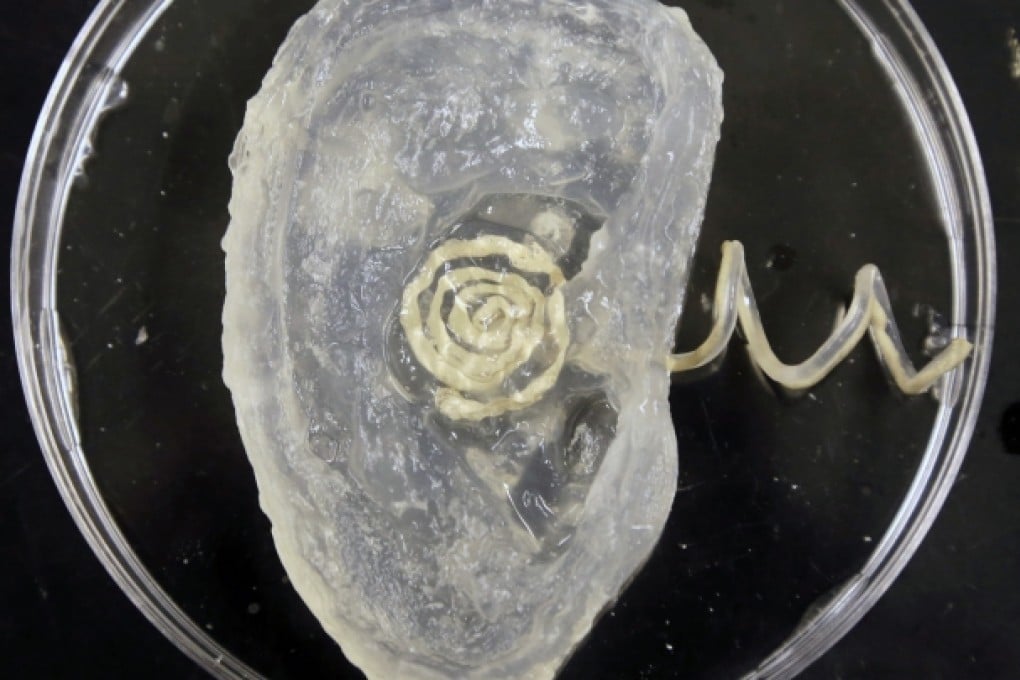
With a 3-D printer, a petri dish and some cells from a cow, Princeton University researchers are growing synthetic ears that can receive - and transmit - sound.
The scientists send bovine cells mixed in a liquid gel through the printer, followed by tiny particles of silver. The printer is programmed to shape the material into a “bionic ear,” and forms the silver particles into a coiled antenna. Like any antenna, this one can pick up radio signals that the ear will interpret as sound.
The 3-D ear is not designed to replace a human one, though; the research is meant to explore a new method of combining electronics with biological material.
“What we really did here was actually more of a proof of concept of the capabilities of 3-D printing,” said Michael McAlpine, the professor who led the project. “Because most people use 3-D printing to print passive objects — things like figurines and jewelry.”
After it’s printed, the 3-D ear is soft and translucent. It is cultivated for 10 weeks, letting the cells multiply, creating a flesh color and forming hardened tissue around the antenna.
Manu Mannoor, a graduate student who worked with McAlpine on the project, held up a petri dish in a lab at Princeton last week to show how the process works. The dish was filled with liquid and a partly cultivated ear, and Mannoor said the cells were secreting a matrix, the space between cells that exists in organisms.